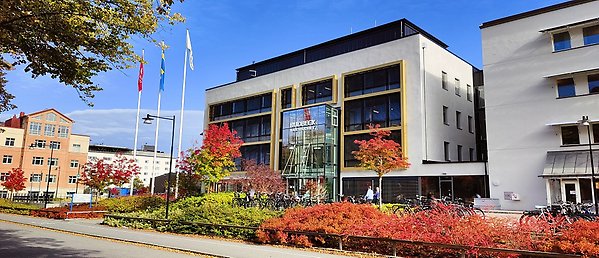[The Svedberg seminar] Prof. Jay Hinton
October 13 @ 15:15 – 16:30 CEST
University of Liverpool, UK
Time: 15:15
Venue: C8:305, BMC, Uppsala
Host: Siv Andersson, Uppsala University
Prof. Jay Hinton is Professor of Microbial Pathogenesis at the University of Liverpool. Prof. Prof. Hinton has developed RNA-seq-based approaches for studying gene expression of in vitro-grown and intra-macrophage bacteria. He is currently using functional genomics methods to understand how new Salmonella pathovariants are causing endemic bloodstream infections across sub-Saharan Africa. This disease has killed around 500,000 people over the last decade.
Title of the talk:
How has Salmonella become so dangerous in Africa?
With 3.4 million infections each year, invasive non-Typhoidal Salmonella (iNTS) is a major cause of illness worldwide. In Sub-Saharan Africa, bloodstream infections involving iNTS Salmonella enterica serovar Typhimurium are causing ~49,000 deaths annually. Co-infection with HIV or malaria in adults, and a young age (<5 years) are known risk factors. The main causative agent of iNTS is a pathovariant of Salmonella Typhimurium called ST313, which is multi-drug resistant and closely-related to the ST19 type of Salmonella responsible for gastroenteritis globally.
Using a combination of comparative genomics and comparative transcriptomics,
we discovered phenotypic differences that distinguish African from global Salmonella pathovariants (Canals et al., 2019; Honeycutt et al., 2020).
Our analysis led us to identify a single core genome SNP responsible for the up-regulation of a single promoter in strain D23580 that controlled the expression of a Salmonella virulence factor (Hammarlöf et al., 2018), and offers part of the explanation of the pan-African epidemic of bloodstream infection.
All of the Salmonella transcriptomic data we have generated are now available online in a user-friendly website that allows intra-strain and inter-strain comparisons of gene expression between African and global pathovariants of
S. Typhimurium: https://tinyurl.com/SalComD23580
Most recently, we used the combined power of genomics and epidemiology and thousands of historical and contemporary Salmonella isolates to understand the precise evolutionary trajectory of the S. Typhimurium ST313 pathogen in Africa. We identified a series of novel genome degradation events that impacted upon the function of Salmonella genes required for colonisation of the mammalian gut, providing evidence of niche adaptation and the continuing evolution of ST313 (Pulford et al., 2021).
I will summarise the evolutionary pathway of invasive S. Typhimurium across Africa, and explain the value of an integrated functional genomic analysis for understanding how bacterial pathogens cause disease.
References
Canals et al. (2019) Adding function to genome of African Salmonella Typhimurium ST313. PLoS Biology 17(1): e3000059. DOI: 10.1371/journal.pbio.3000059
Hammarlöf et al. (2018) Role of a single noncoding nucleotide in the evolution of an epidemic African clade of Salmonella. PNAS 115: E2614 – E2623.
Honeycutt et al. Genetic variation in the MacAB-TolC efflux pump influences pathogenesis of invasive Salmonella isolates from Africa. PLoS Pathog. 2020 16:e1008763. DOI: 10.1371/journal.ppat.1008763
Pulford et al. (2021) Stepwise evolution of Salmonella Typhimurium ST313 causing bloodstream infection in Africa. Nature Microbiology 6: 327–338.
DOI:10.1038/s41564-020-00836-1

